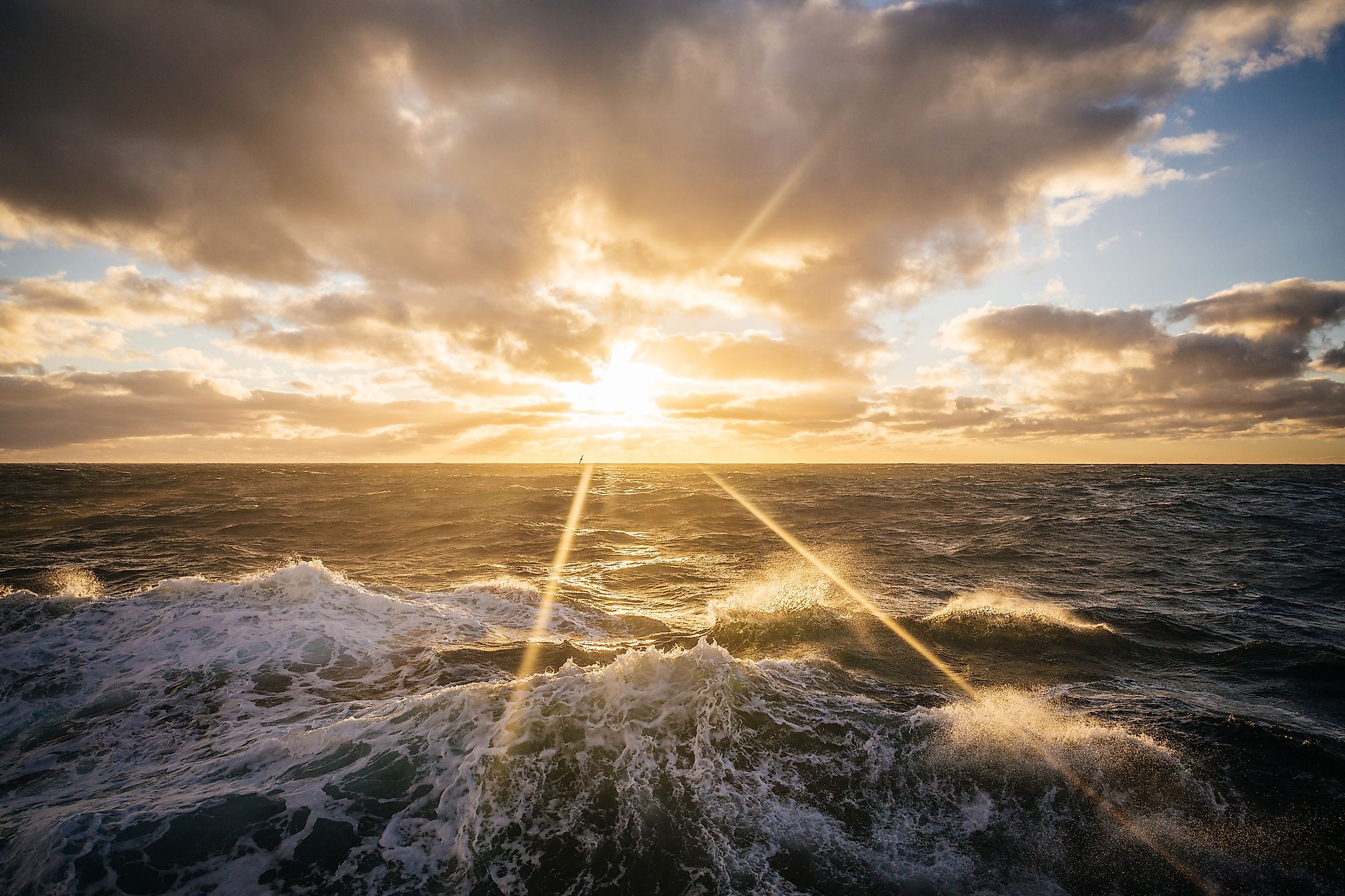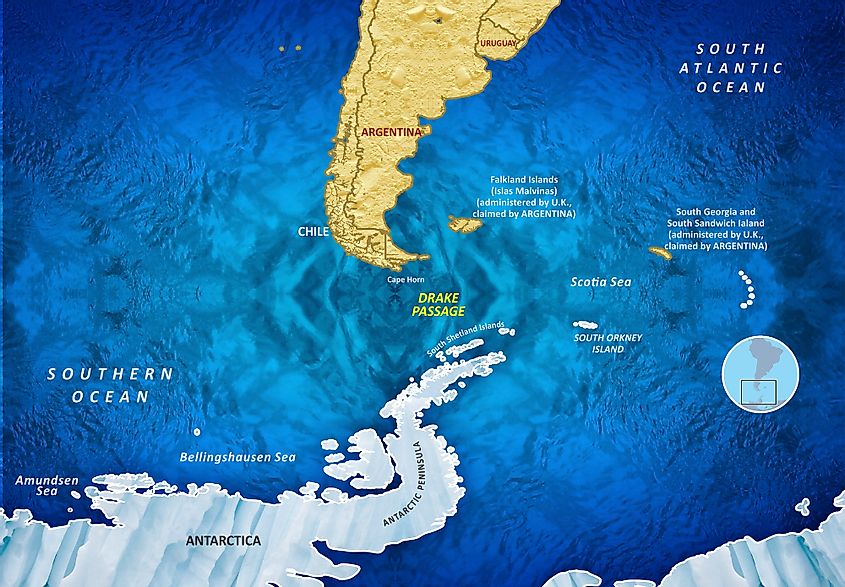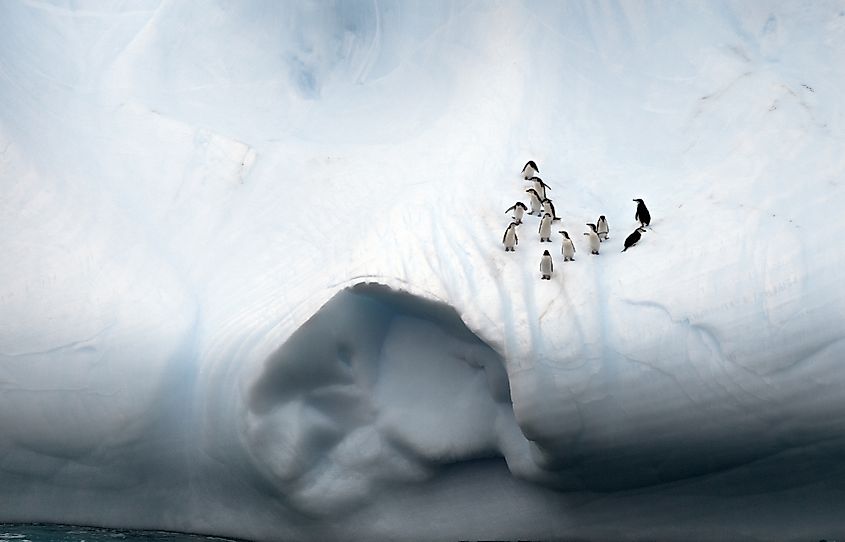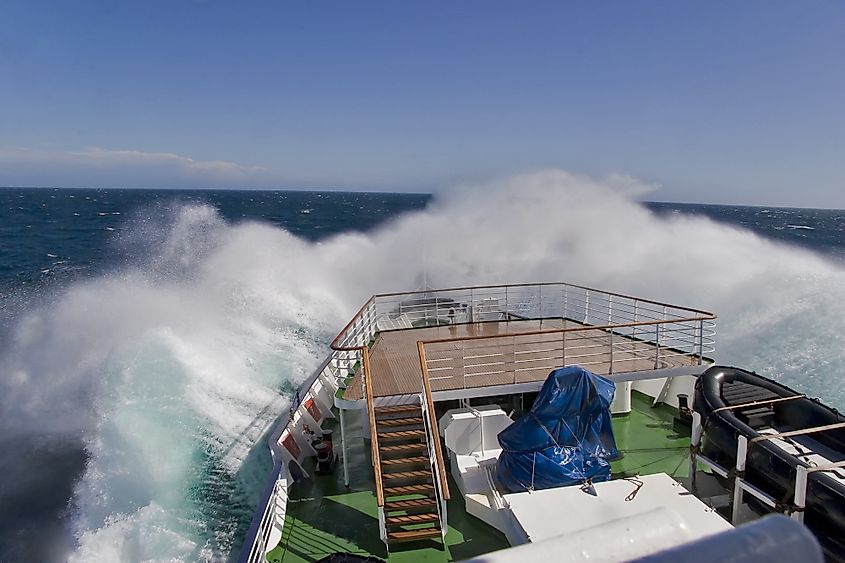
Drake Passage
The difference between a strait and a passage is that a strait is a narrow water body connecting two larger water bodies, while a passage connects water bodies between islands. However, the two terms are often used interchangeably. The Drake Passage is one of the most famous waterways or passages in the world. It is one of the most treacherous places for sailors and water vessels because of the strong currents that do not meet any resistance from a landmass. It has a reputation for being the most powerful convergence of seas. The Drake Passage connects Antarctica to the rest of the world by providing the shortest route.
Where Is The Drake Passage?

The Drake Passage is a water body between South America and Antarctica, specifically between Cape Horn in Chile and South Shetland Island in Antarctica. The passage connects the Scotia Sea (Atlantic Ocean) with the Pacific Ocean.
Cape Horn is South America’s southernmost point, located in Hornos Island. The Drake Passage marks the point where the Pacific and Atlantic oceans meet. South Shetland Island is located 160 kilometers north of Antarctica Peninsula. The passage also extends into the Southern Ocean.
Geography Of The Drake Passage

The Drake Passage has an average depth of 3,400 meters, with the deepest part (near the southern and northern boundaries) measuring 4,800 meters below the water surface. The passage is the shortest crossing from Antarctica to the rest of the world, with the narrowest point being the 800-kilometer passage between Livingston Island and Cape Horn.
The passage’s seafloor has sediments of varying degrees. The region south of Tierra del Fuego has sandy and clay silt on the seafloor, while the regions near Antarctica have ice-rafted material. The sediments on the passage’s floor represent Antarctica and South American origins, as well as planktonic material in the water.
The Drake Passage is approximately 1,000 kilometers long and is the site for the most powerful convergence of seas. The Southern Seas, Pacific Ocean, and the Atlantic Ocean converge at the passage, creating a strong current mix. The currents do not meet any resistance from any landmass, forming the Antarctic Circumpolar Current. ACC is a voluminous current, with a flow rate of between 95 and 150 million cubic meters per second. However, the Drake Passage is sometimes very calm, enabling expedition vessels to sail to and from Antarctica.
The Climate Of The Drake Passage

The Drake Passage acts as a zone, separating Tierra del Fuego’s subpolar, humid, and cool conditions from Antarctica’s polar region. The westerly winds over the passage are more intense around Cape Horn in Chile. Cyclones forming over the Pacific Ocean sweeps from west to east across the passage’s southern edge.
The air and surface water temperatures vary across the passage. The average air temperature over the Drake Passage ranges from 41 degrees Fahrenheit in the north to 27 degrees Fahrenheit in the south. Water surface temperature also varies from 43 degrees Fahrenheit in the north to 30 degrees Fahrenheit.











